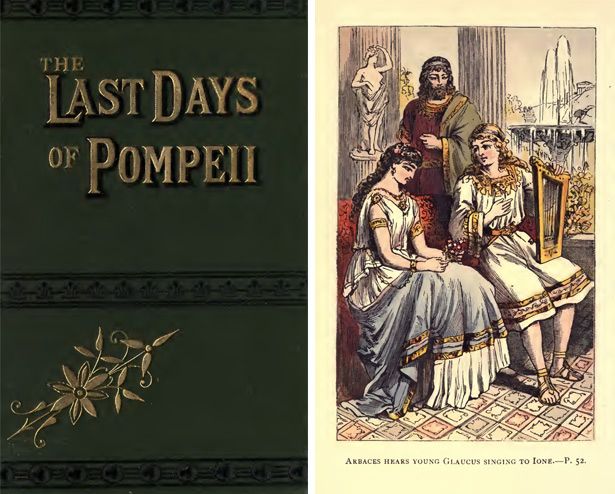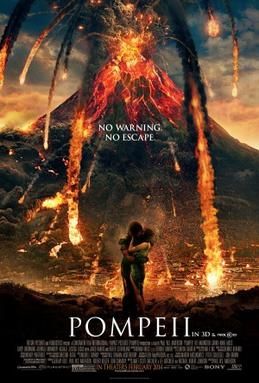
Pompeii Main Page
General Info

| City | Pompeii |
|---|---|
| Country | Italy |
| Place Name | Pompeii |
Overview
Welcome to the historic city of Pompeii, a testament to the eternal glory of the Roman Empire. This UNESCO World Heritage Site is a treasure trove of ancient architecture, history and culture.
The once bustling and lively city of Pompeii was frozen in 79 AD. A.D. when nearby Vesuvius covered it with ash and pumice. This tragic event ironically preserved the city under layers of rubble, giving future generations a rare and intimate glimpse into Roman life.
Today, visitors can walk the ancient cobbled streets of Pompeii, see houses still decorated with frescoes and mosaics, and admire the grandeur of public buildings such as the forum, amphitheater and Temple of Apollo.
Pompeii's remarkable archaeological finds are poignant reminders of the city's rich cultural tapestry. Although silenced by a volcano centuries ago, the history of this ancient city continues to fascinate and inspire.
Siesta House: Admire the ancient frescoes in the rooms that bring the Roman way of life to life.
Forum: the place where the most important public functions of the city were once held.
Amphitheater: Admire the ancient performance space and discover the Romans' love of theater and public entertainment.
Ruined Temples: Walk among the remains of religious buildings, a testament to a deeply spiritual society.
History
Pompeii: this historic city needs no introduction, it was indelibly recorded in the annals of history after the catastrophic eruption of Vesuvius in 79 AD. A.D. Once a bustling metropolis of antiquity, Pompeii is now a grim but unparalleled glimpse into Roman life.
Before the disaster, Pompeii was a thriving Roman city, bustling with cultural and commercial activity. Bustling markets, luxurious villas and magnificent temples illustrated the prosperity and grandeur of the Roman Empire.
Frescoes; These bright frescoes decorated the interior walls of the buildings, allowing an interesting look at the artistic expression of the time.
Forum; the heart and soul of the city, serving not only as a marketplace, but also as a place of political, social and religious activity.
Thermal baths; a common space that permeates leisure with hygiene, embodying the Roman ethos of "a healthy mind in a healthy body".
But Pompeii's fortunes took a turn for the worse on a fateful summer day in 79 AD. It began with minor tremors that would soon culminate in one of the most devastating volcanic eruptions in history. The eruption of Vesuvius buried the city in ash and pumice, preserving it until its rediscovery in the late 16th century.
Today, Pompeii is a testament to the power and terror of Vesuvius, forever frozen in time. Uncovering each artifact and structure will provide an insight into the unimaginable final moments of the inhabitants, as well as the daily lives they once lived before the cataclysmic day came. Pompeii is thus a poignant reminder of the transience of life and a lasting reminder of culture and civilization.
Geography and Natural Features
Geography and natural features
Pompeii, a city in southern Italy, is located at the southeastern foot of the mighty Vesuvius. Once a bustling city in the Roman Empire, Pompeii is known today as an archaeological site of great importance, whose existence is determined by geography and the natural features that surround it.
The city's location near the Bay of Naples provided a convenient entry point for sea trade and ensured a robust economy rich in a variety of exotic goods. The fertile plain of Pompeii ensured a high quality of life for the inhabitants thanks to the soil enriched with volcanic ash. These fertile vineyards and vast farmlands painted a picture of abundance and prosperity.
Vesuvius stands at the center of Pompeii's geography. The catastrophic eruption of this active stratovolcano in 79 marked the city's fate by covering it with layers of ash and pumice. Despite the devastation, the volcano of Pompeii itself gave it its most characteristic feature: a multi-layered picture of life as it was almost two millennia ago.
Today, Pompeii provides a stark contrast between death and life, destruction and fertility. The remains of the once glorious city, nestled in the lush greenery, remind visitors of nature's paradoxical ability to destroy and create at the same time. A living monument to the past, Pompeii's geography and natural features continue to fascinate and educate, offering timeless insights into man's relationship with nature.
Influence and Legacy Features
With a history spanning more than two millennia, Pompeii's influence and legacy have left an indelible mark on the world. The Ancient Roman city, protected under the volcanic ash of Vesuvius, continues to fascinate not only historians and archaeologists, but also artists, writers and the general public.
The sudden disappearance of
Pompeii has preserved a moment in time and provided an unprecedented glimpse into the daily lives of people in an ancient civilization. With its well-preserved amphitheater, baths, villas and exquisitely carved mosaics, this ancient city has become an important source for modern architecture and design.
The tragedy of Pompeii finds its place in many paintings, works, books and films and continues to influence popular culture to this day. It is an eerie reminder of natural disasters and an iconic symbol of the human ability to resist and rebuild.
- The Eternal City is the immortal legacy of Pompeii as an archaeological treasure.
- Modern inspiration - the influence of the city on contemporary art, architecture and literature.
- Silent Witness - Pompeii's role as sentinel, a reminder of our vulnerability in the face of nature's wrath.
Pompeii's legacy is a story of inspiration, lessons and resilience that continues to intrigue and captivate the world's conscience.
References
TrendingFan Content
So far, there is no trending fan content for this particular universe. Explore all available content and find something you might like!
